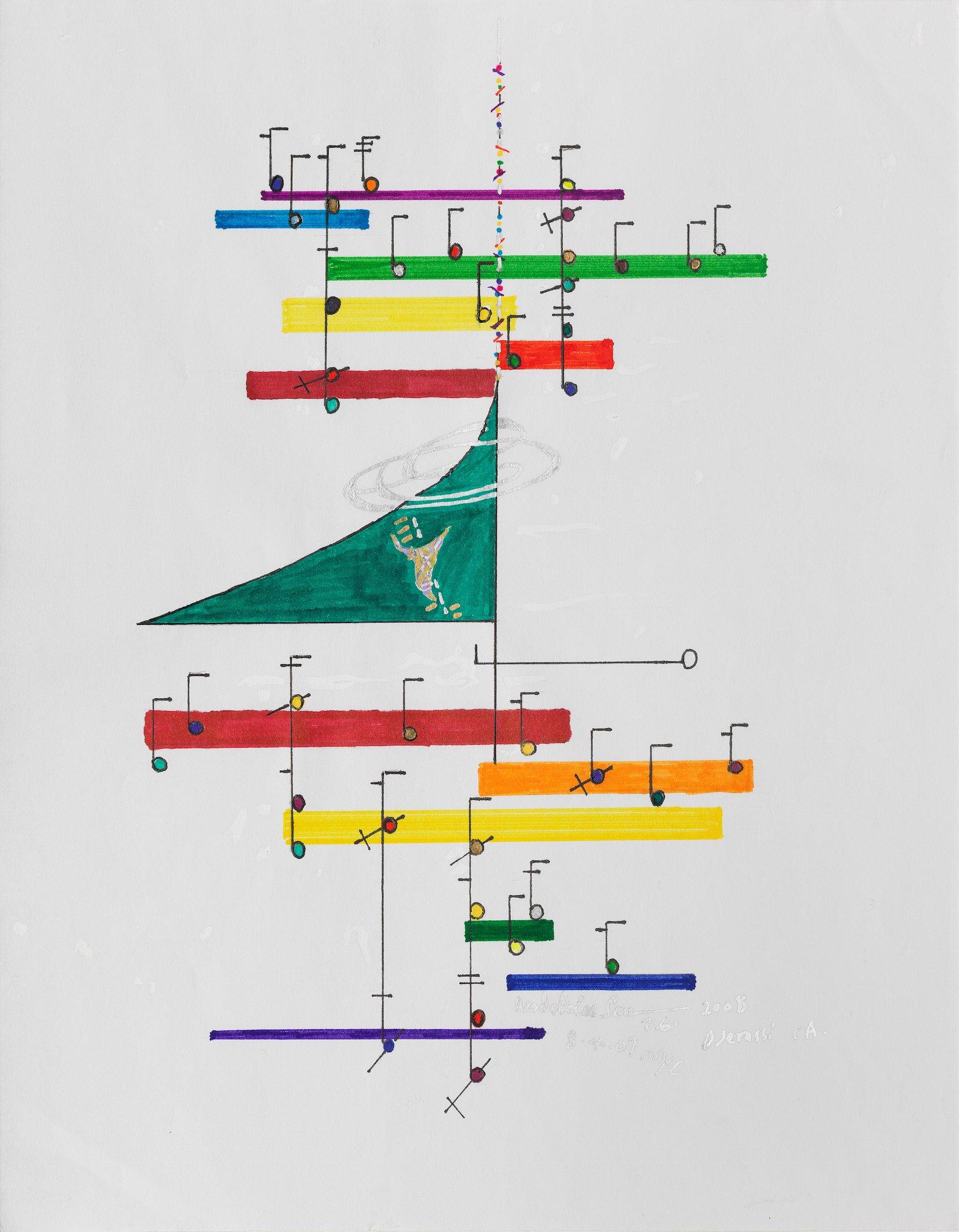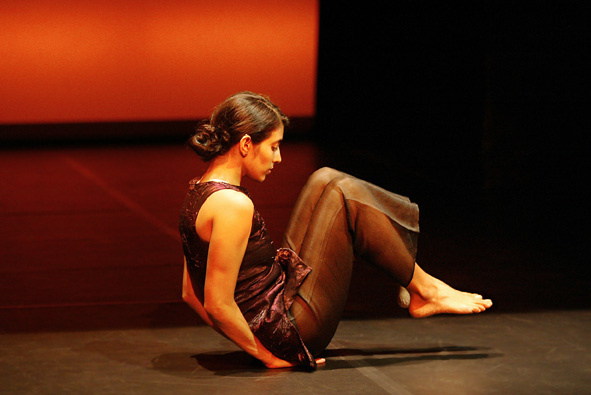offering
2016
114.3 x 86.36 cm
Gyempo Wangchuk
The various distinct but connected lineages of Himalayan painting remain thriving languages employed by artists from across the region to express their unique perspective in our shared contemporary world. In Bhutan in particular, this language is prevalent and its maintenance is seen through the political prism of preserving Bhutan’s identity in the global world. That being said, o ffering by Gyempo Wangchuk presented an attempt to bring a critical dimension within the traditional Himalayan forms of expression. The artist achieves this not through a facile postmodern device of associating discording languages, but through employing the means available within that painterly tradition to bring a forceful process of questioning. The stylized painting is composed of natural pigments on cotton canvas, and combines both figurative elements and abstract patterns. The work is thus composed following the general traditional aesthetic and rules of presenting sacred offerings to the gods. But rather than presenting the traditionally pure items deemed acceptable in this context, Wangchuk introduces mundane and even impure offerings, humanising the process and critiquing the broader ideology of purity dominating Bhutanese religion and society.
Gyempo Wangchuk is a unique artist in the Bhutanese, and wider Himalayan context because he combines his classical training in traditional Bhutanese painting with contemporary concepts and aesthetics, as well as discreet but potent expressions of dissidence. Bhutan is the last surviving Himalayan kingdom and until recently one of the most isolated countries in the world. While generally praised for its official policy regarding conservation of traditional identities, the protection of natural resources, and its much hyped concept of Gross National Happiness, Bhutan is also known for its penchant for uniformity around its monarchical and religious system, an ideology of purity that lead in the past decades to the expulsion of over a third of its ethnic minority population, one of the largest and less acknowledged acts of ethnic cleansing in the world. The country’s art scene is very much rooted in traditional Himalayan painting, but within this language, Gyempo Wangchuk is a pioneering figure, who brings critique and a plurality of perspectives to the artistic conversation.
Colors:
Related works sharing similar palette
» see more

© » ART CENTRON
Getting Creative: Beginner Tips for Learning Guitar Home » Getting Creative: Beginner Tips for Learning Guitar LIFESTYLE Nov 13, 2023 Ξ Leave a comment Getting Creative: Beginner Tips for Learning Guitar posted by Kelly Schoessling Learning to play an instrument takes a lifetime of effort, no matter what type of music you’re interested in...

© » KADIST
Joana Hadjithomas & Khalil Joreige
2017Produced for the Prix Marcel Duchamp and presented at the Centre Pompidou in October 2017, the installation Uncomformities is comprised of photographs, archaeological drawings, and narratives, based on the analysis of core samples from different sites in Beirut, Paris and Athens...
Related works found in the same semantic group
» see more

© » KADIST
Angelica Mesiti
2013Angelica Mesiti’s piece, The Calling (2013-14) is a poignant exploration of ancient human traditions evolving and adapting to the modern world...





